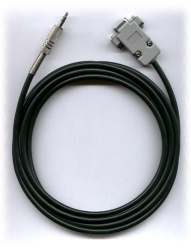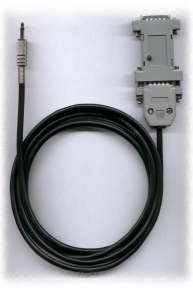| [ Home ] [ Térburkolatok ] [ Üllői vízmű ] [ Modellezés ] [ Úszómedencék ] [ Minolta AF 5000 ] [ Fényképezőgépek ] |
| [ FMS faq ] [ PPJoy setup ] [ Rc-Game interface ] [ Glow plug driver |
|
A relatively cost efficient way of learning the control of R/C models is the use of simulators. When you primarily want to practise with your original R/C transmitter with the chosen simulator, it is necessary to connect the transmitter to the PC. The type of the transmitter, the type of the simulator, and the available connections on the PC also determines your choice of the interface. In the following, I shortly describe the available interfaces in general, and I detail my interfaces in particular.
The generally available solutions:
The input device has to be accepted by the chosen simulator:
The input device has to be connected to the PC, to do this you have to have a freely available port for this:
All the above interfaces usually connects to the transmitter's trainer connector. This requires some compatibility from the transmitter ( type of modulation ):
Interfaces available form me:
After this, if somebody needs an interface cable, may search the net, or choose one from the three currently available type from me:
 The support for this interface was included in the simulator relatively early, this means, it is available with older versions of FMS too. The electronics is relatively simple, contains only two transistors and a few passive components, power is supplied to it through the COM port's signal lines. The interface available from me is built partially from SMD components, into the 9 pin COM port connector's case, the price is 3400 Ft in Hungary, 17 EUR abroad, further details below.
The support for this interface was included in the simulator relatively early, this means, it is available with older versions of FMS too. The electronics is relatively simple, contains only two transistors and a few passive components, power is supplied to it through the COM port's signal lines. The interface available from me is built partially from SMD components, into the 9 pin COM port connector's case, the price is 3400 Ft in Hungary, 17 EUR abroad, further details below.
 A push button on the enclosure is available to be used as button for the game port, to support calibration under Win.. These button is also useful to walk through the interface's own calibration menu. With this interface calibration option you can setup the interface to match your transmitter, and you can change the channel arrangement and direction on a channel by channel basis. The interface is compatible with all the o.s. -es that supports standard joysticks. On Win.. it is configurable as a 4 axes, 1 button joystick ( but due to the fact that it uses the button feedback lights to display the internal state during calibration, it is recommended to be configured as a 4 axes 4 button controller ). The interface is compatible with not only game ports based on the old NE558 circuit ( originating from XT times ) but with A/D converter based solutions found on some notebooks and Game/USB adapters. The interface cable is built up form two sub-parts: from the cable, this contains the transmitter dependent connections, but no electronics, and the interface electronics itself. The interface electronics is built into a SUB-D 15/15 converter enclosure, and may be connected directly to the game port connector.
The setup instructions for the interface is available
here but currently only in hungarian ( english version on request ). The price is 7900 Ft in Hungary, 40 EUR abroad, further details below.
A push button on the enclosure is available to be used as button for the game port, to support calibration under Win.. These button is also useful to walk through the interface's own calibration menu. With this interface calibration option you can setup the interface to match your transmitter, and you can change the channel arrangement and direction on a channel by channel basis. The interface is compatible with all the o.s. -es that supports standard joysticks. On Win.. it is configurable as a 4 axes, 1 button joystick ( but due to the fact that it uses the button feedback lights to display the internal state during calibration, it is recommended to be configured as a 4 axes 4 button controller ). The interface is compatible with not only game ports based on the old NE558 circuit ( originating from XT times ) but with A/D converter based solutions found on some notebooks and Game/USB adapters. The interface cable is built up form two sub-parts: from the cable, this contains the transmitter dependent connections, but no electronics, and the interface electronics itself. The interface electronics is built into a SUB-D 15/15 converter enclosure, and may be connected directly to the game port connector.
The setup instructions for the interface is available
here but currently only in hungarian ( english version on request ). The price is 7900 Ft in Hungary, 40 EUR abroad, further details below.
The pictures above are only illustrations, the actual outfit depends on the available parts, but I try to hold the quality as possible. The cord is 2 m long, the transmitter connector is chosen based on negotiation. The price contains V.A.T. and postage costs world wide, but doesn't contains the money transfer fee to me. For international customers only pre payment is the currently only option via bank transfer ( if you would like to pay via PayPal let me know ). The interfaces are shipped with a 1 month money back guarantee ( two month for international orders ) and a one year normal guarantee. The guarantee is limited: you have to cover the costs of the transfer of the device to me. All the international orders are shipped with an english version of the setup instructions.
From the above selection I suggest the FMS-PIC interface, if the listed restrictions are not scaring you away.
R/C transmitters
These interface electronics, connects to the R/C transmitters buddy ( trainer ) socket, and needs PPM ( Pulse Position Modulated ) signals. From brand to brand, or at some manufacturers from type to type, the trainer connector pinout, signal level, and features are changing. A good collection of available transmitter pinouts are described at http://users.belgacom.net/TX2TX/. Further requirements to set up your transmitter for usage with simulators are: When you use the transmitter with a simulator, you transmitter can't be powered through the trainer cord from the other transmitter, because during simulation there is not another transmitter ( this is applicable to some Futaba transmitters ). The transmitter has to be turned on, but the RF ( Radio Frequency ) output has to be turned off, to avoid unnecessary rf output, and unnecessarily high discharge rate of the batteries. This may be achieved on some transmitters ( usually equipped with DIN trainer connector ) with placing a shorting wire between specific points of the trainer connector plug, on some featured transmitter the RF circuitry may be turned off from software, but the most general solution is to pull out the quartz crystal from the transmitter.
Some proven solution:
The most uniform solution is from Hitec: all the known transmitters are equipped with the same connector, and the same pinout. The most versatile manufacturer is Futaba, who may use different connectors on different transmitter types, and may use same connectors with different pinout, and most recently uses non standard 6 pin square connectors.
Some interesting links:
fms - free flying model simulator.
fms hungarian menu - menu and some instructions in hungarian.
fms forum - discussion group for fms.
rcmodell fórum - hungarian discussion groups related to modeling.
rc-sim - simulator and interface electronics comparisons, links.
crrcsim - free simulator for linux.
Send comments and request in email, or in the evenings ( 19:30 - 21:00 CET ) on phone: +36-29-351-678.
| Home | Térburkolatok | Üllői vízmű | Modellezés | Úszómedencék | RSPEC! | Minolta AF 5000 | Fényképezőgépek |